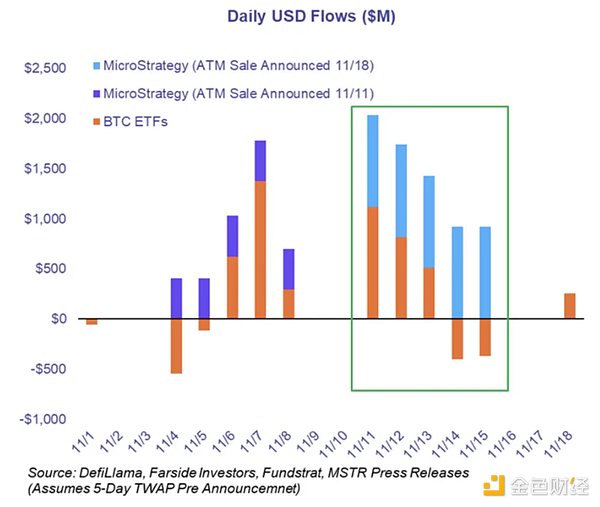Author: Zack Guzman; Translated by: Vernacular Blockchain
MicroStrategy founder Michael Saylor has become one of Bitcoin's most outspoken supporters, boldly declaring: "There is no second best choice."
Since 2020, Saylor has purchased more than $30 billion in Bitcoin through his listed companies, with book profits exceeding $14 billion, making MicroStrategy the company with the most Bitcoin. This strategy has won praise from Bitcoin maximalists while also attracting doubts from traditional investors.
However, as MicroStrategy continues to raise billions of dollars in funds - planning to raise $42 billion in new financing over the next three years - to bet four times on Bitcoin, external concerns are also growing. Is this brewing another huge bubble? If the price of Bitcoin falls, how will MicroStrategy's bold move end?
1. Echoes of the Ghost of the Trade
MicroStrategy's Bitcoin strategy has similarities to one of the most notorious trades in the crypto space, the "GBTC premium trade." At the peak of this wave of arbitrage trading, investors gained Bitcoin exposure through the Grayscale Bitcoin Trust (GBTC) because it traded at a higher price than the value of the underlying Bitcoin holdings. They took out loans in exchange for shares of GBTC and earned premium income after the lock-up period ended.
This trade collapsed dramatically in 2021, when the GBTC premium turned into a discount. Companies like Three Arrows Capital and BlockFi that were over-leveraged or associated with leveraged clients collapsed one after another. A series of subsequent bankruptcies, including the bankruptcy of Genesis, highlighted the risks of financial strategies built on fragile market imbalances.
Today, critics warn that MicroStrategy is walking a similar tightrope. But unlike taking advantage of the GBTC premium, MicroStrategy has opened up a new path for leveraged Bitcoin trading through its own stocks and bonds—effectively turning the company into a leveraged Bitcoin proxy.

MicroStrategy's Bitcoin purchase behavior in some periods
2. The magic of convertible bonds
The core of MicroStrategy's strategy is to raise funds through the issuance of convertible bonds and stocks, and it works as follows:
Borrowing at low interest rates (0%) MicroStrategy provides bondholders with bonds with extremely low or even zero interest rates.
In return for the potential for stock appreciation, bondholders can convert their bonds into MicroStrategy shares when the stock price rises. This potential gain has attracted a host of institutional investors, including Germany's largest insurance company, Allianz.
The funds raised from buying more Bitcoin are then used to buy more Bitcoin, driving the stock price up further.
This feedback loop has led to an astonishing performance for MicroStrategy's stock, which has risen nearly 500% in 2024 alone. The strategy has been so successful that bond investors are willing to lend billions of dollars to the company at 0% interest, attracted by the potential appreciation of the stock price.
It's an attractive argument: Why settle for a low interest return on bonds when MicroStrategy can offer you the opportunity to double or even quintuple your investment? As Saylor put it in a recent investor call, bondholders are fleeing a world of “negative real returns” for the potential gains that Bitcoin offers.
For now, MicroStrategy’s strategy is working extremely well, with the rise in Bitcoin prices creating a virtuous cycle. But what happens if Bitcoin’s run reverses?
MicroStrategy owns nearly 387,000 Bitcoins, worth about $37 billion, but its stock market valuation has surpassed $100 billion. This super-high valuation relies heavily on the assumption that Bitcoin prices continue to rise. If Bitcoin falls, the company’s stock price—essentially a leveraged bet on Bitcoin—could fall sharply.
It’s also important to note that double-leveraged ETFs like MSTU and MSTX, which focus on MicroStrategy, are also further fueling speculation in the market based on MicroStrategy’s Bitcoin speculation.
All of this is driving the huge Bitcoin purchases. In fact, MicroStrategy's buying far outweighed the combined inflows of all Bitcoin ETFs earlier this month, according to Fundstrat's research. If the market begins to doubt whether MicroStrategy can achieve its $42 billion funding goal, Bitcoin prices could fall, further jeopardizing MicroStrategy's ability to raise funds. And once this situation changes, the situation could deteriorate rapidly. Similar situations occurred during FTX's fundraising attempts when it needed funds the most, and during Terra's $40 billion collapse.
Although Saylor has repeatedly emphasized that the company will never sell its Bitcoin, this position may be difficult to maintain if debt pressure increases and Bitcoin prices fall.
3. Historical lessons
The cautionary tale of GBTC trading at a premium is still vivid. When market conditions changed, this bubble burst, exposing the fragility of leveraged strategies. While MicroStrategy’s approach avoids some of the pitfalls of the GBTC trade — it doesn’t rely on an inefficient fund structure, for example — it faces the same core risk: leverage could amplify losses if the price of Bitcoin falls.
Saylor’s unwavering belief in Bitcoin may inspire confidence, but history shows that markets can’t rise indefinitely. Just as overconfidence in a “self-sustaining system” led to $40 billion in losses when Terra collapsed in 2023, MicroStrategy’s stock price could face a similar moment of reckoning if the price of Bitcoin falls.
However, for Bitcoin supporters who are convinced that the U.S. government will follow suit and add Bitcoin to its strategic reserves, MicroStrategy’s bet has the potential to become the greatest investment of all time — either known as a “stroke of genius” or a “disastrous failure.”
 Weatherly
Weatherly



